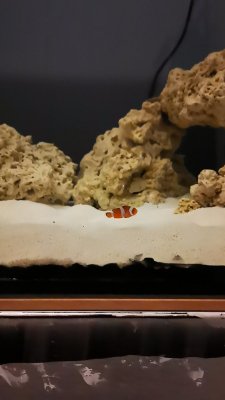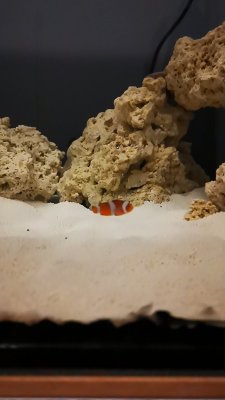Last week I lost a clownfish already what looked like stress signs. The other one I have was doing good till now.
Ive added a video and a picture of the fish to see if you guys can help with ID on why my fish are dying or looking like dying.
Tank size is 80 gallons with sump
Tank is up for 3 months, started with dry rock and sand, and been adding Bacteria for the cycle. Currently adding bacteria every 15 days (prodibio biodigest)
Skimmer is a red sea 300, bioblocks in sump, red sea carbon in bag.
Parameters are:
Salinity 1.024
Temp 24.9 celcius
Ammonia 0
Nitrite 0
Nitrate 15
Phosphate 0.08
The other fish that unfortunately died last week was loosing colours rapidly, and it looked like it died a night.

Ive added a video and a picture of the fish to see if you guys can help with ID on why my fish are dying or looking like dying.
Tank size is 80 gallons with sump
Tank is up for 3 months, started with dry rock and sand, and been adding Bacteria for the cycle. Currently adding bacteria every 15 days (prodibio biodigest)
Skimmer is a red sea 300, bioblocks in sump, red sea carbon in bag.
Parameters are:
Salinity 1.024
Temp 24.9 celcius
Ammonia 0
Nitrite 0
Nitrate 15
Phosphate 0.08
The other fish that unfortunately died last week was loosing colours rapidly, and it looked like it died a night.





















